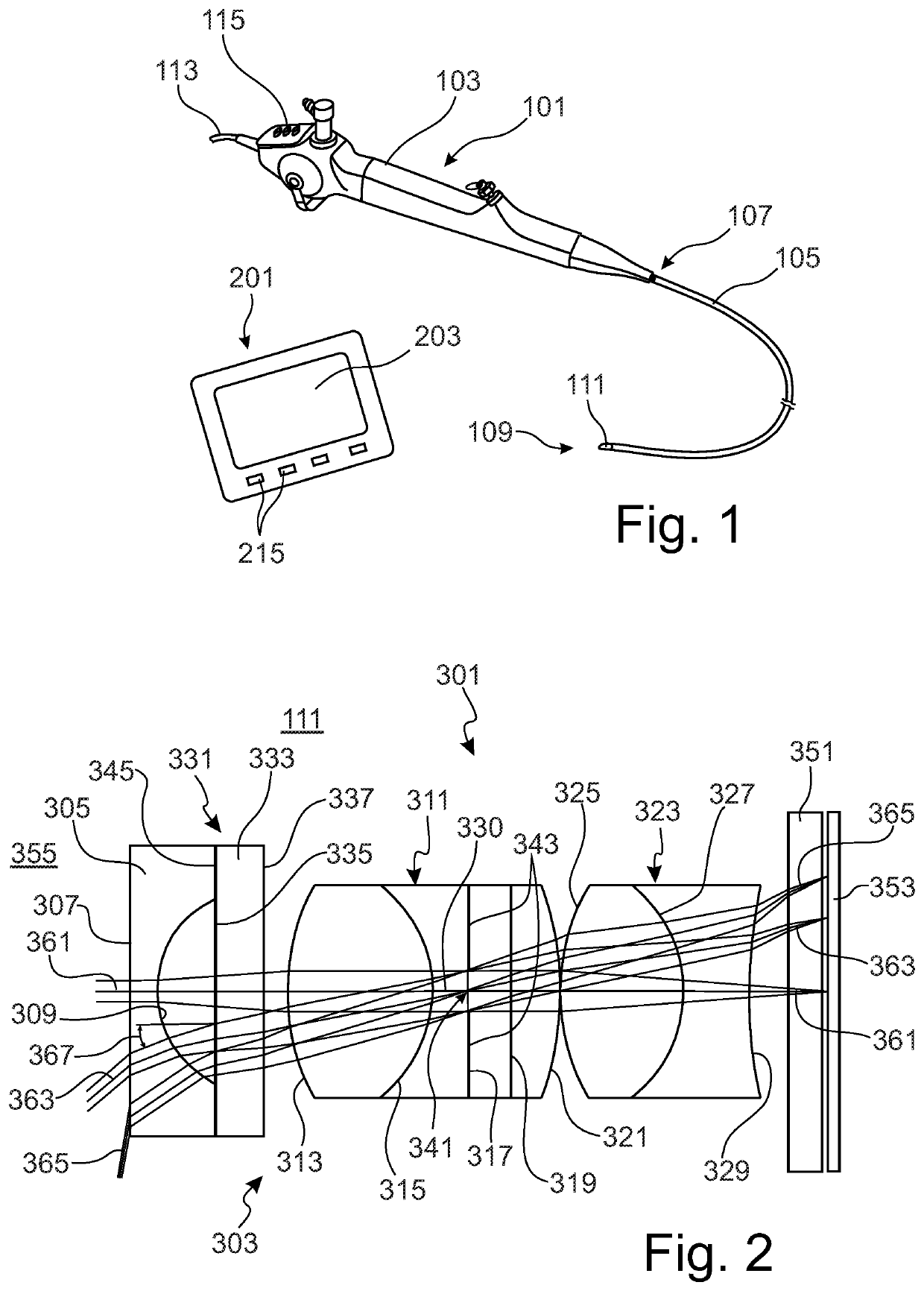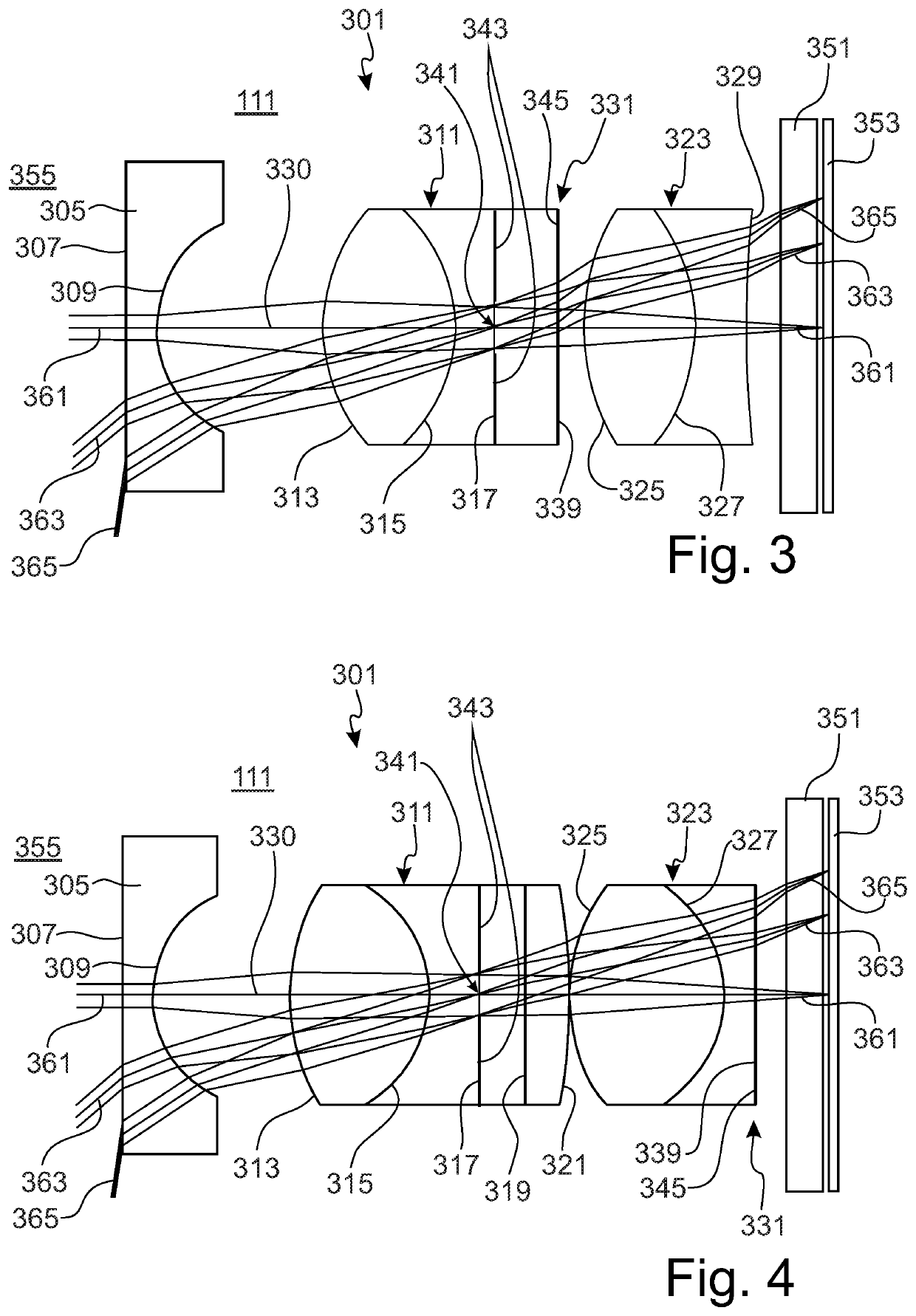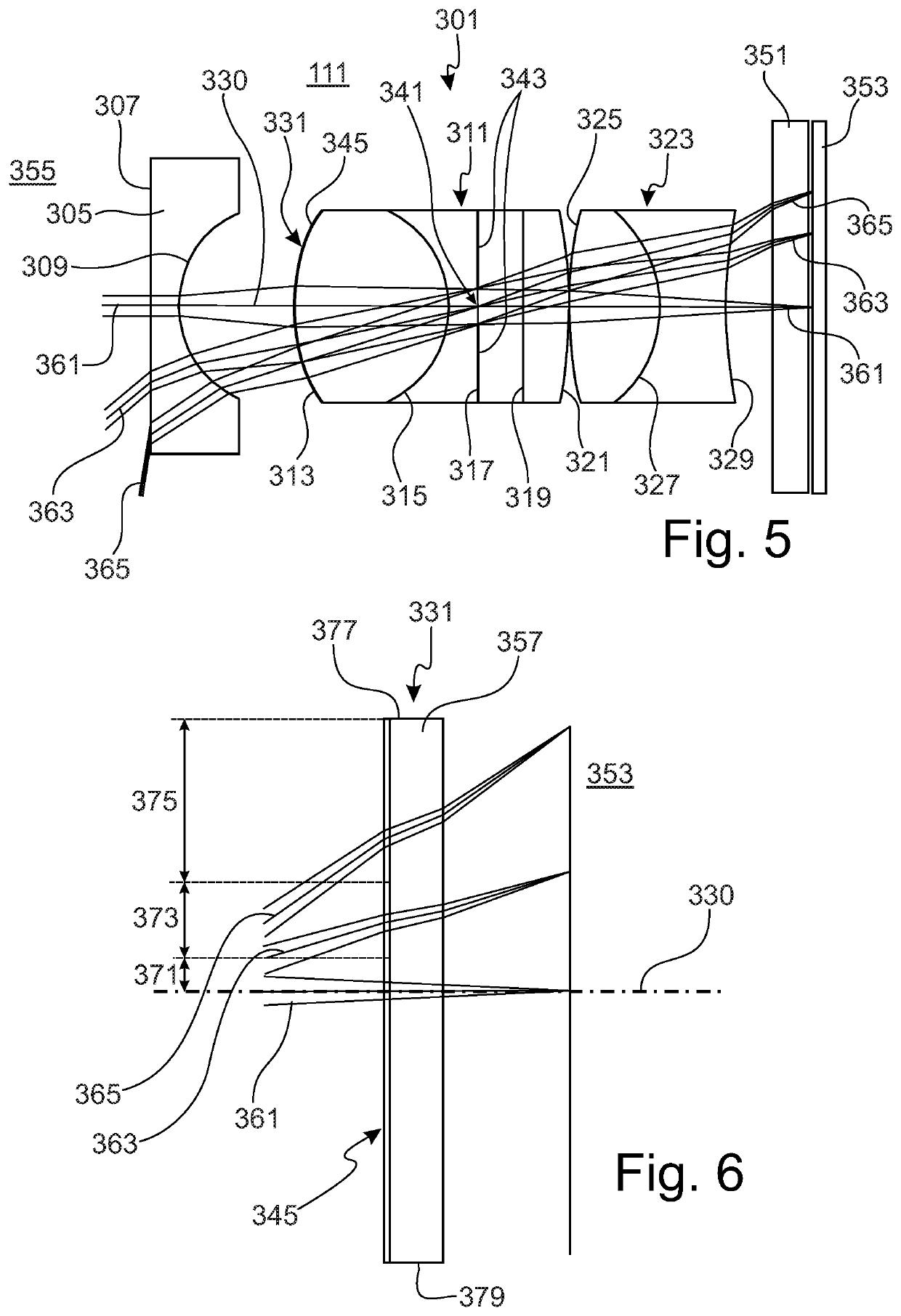Optical System for a Video Endoscope and Video Endoscope
a technology of optical system and video endoscope, which is applied in the field of optical system of video endoscope and optical system therefor, can solve the problems of unreliable fluorescence imaging, unreliable fluorescence observation and imaging, and false interpretation of fluorescence signal
- Summary
- Abstract
- Description
- Claims
- Application Information
AI Technical Summary
Benefits of technology
Problems solved by technology
Method used
Image
Examples
Embodiment Construction
[0074]A video endoscope 101 shown in FIG. 1 comprises a handle 103 and an elongate shaft 105 connectable to each other at a proximal end 107 of the shaft 105. The handle 103 comprises operator controls 115 and is connected via a cable 113 at its proximal end to an external, non-shown control and processing unit and to a display system 201 shown in FIG. 1. The display system 201 includes a monitor 203 for displaying endoscopic images and operator controls 215.
[0075]The video endoscope 101 is designed to provide video and image data from an object field within a cavity of a non-shown body. For this, the elongate shaft 105 comprises, at its distal end 109, a distal end section 111.
[0076]The distal end section 111 of the elongate shaft 105 comprises an optical system 301, as shown in FIGS. 2-5, and an image sensor 353 with a glass plate 351. The optical system 301 comprises an objective lens system 303 with a first lens 305, second combined lenses 311 and third combined lenses 323 in di...
PUM
| Property | Measurement | Unit |
|---|---|---|
| angle of incidence | aaaaa | aaaaa |
| angle of incidence | aaaaa | aaaaa |
| angle of incidence | aaaaa | aaaaa |
Abstract
Description
Claims
Application Information
 Login to View More
Login to View More - R&D
- Intellectual Property
- Life Sciences
- Materials
- Tech Scout
- Unparalleled Data Quality
- Higher Quality Content
- 60% Fewer Hallucinations
Browse by: Latest US Patents, China's latest patents, Technical Efficacy Thesaurus, Application Domain, Technology Topic, Popular Technical Reports.
© 2025 PatSnap. All rights reserved.Legal|Privacy policy|Modern Slavery Act Transparency Statement|Sitemap|About US| Contact US: help@patsnap.com



